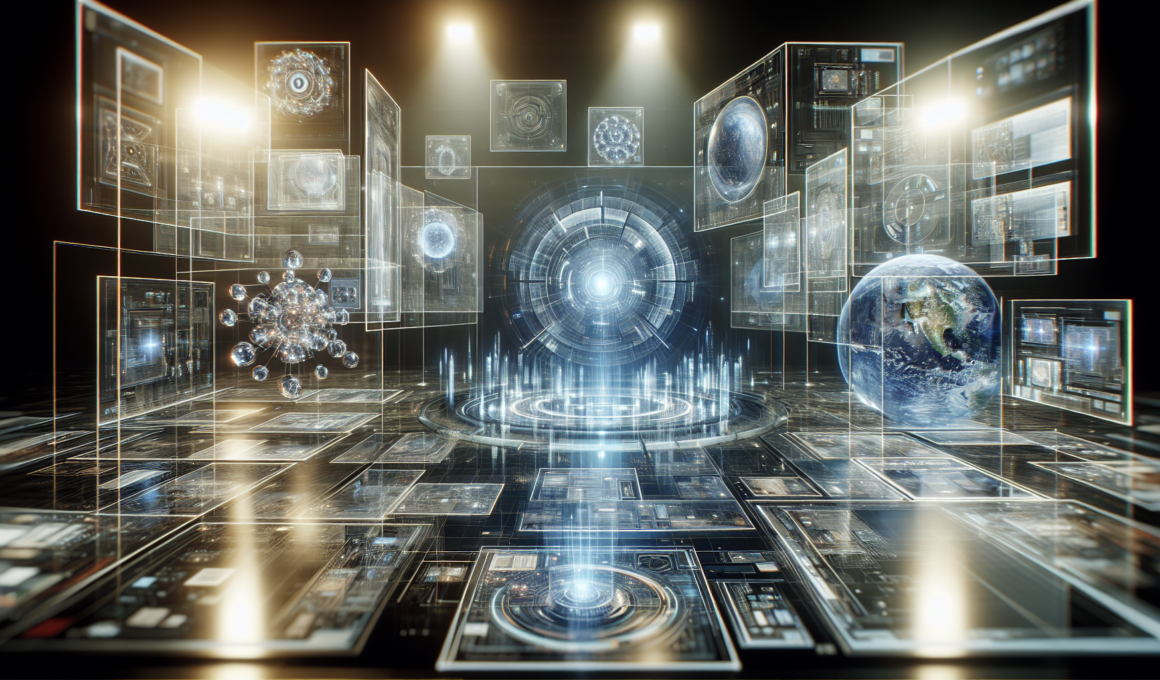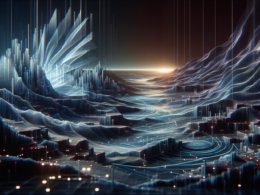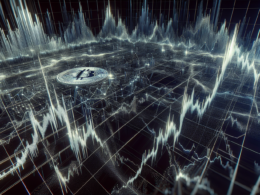What is Holographic Technology?
Holographic technology is a revolutionary advancement that enables the creation, display, and manipulation of three-dimensional images using the principles of light diffraction. Unlike traditional 2D displays, holograms provide an immersive visual experience by reproducing the depth, parallax, and other properties of the original object or scene.
The concept of holography dates back to the 1940s when physicist Dennis Gabor developed the theory while attempting to improve electron microscopes. However, it wasn’t until the advent of lasers in the 1960s that practical holographic recording and display became possible. Since then, holographic technology has evolved significantly, finding applications across various fields, from entertainment to medicine.
The Science Behind Holograms
At the core of holographic technology lies the principle of light interference. When two coherent light beams intersect, they create an interference pattern that can be recorded on a photosensitive medium, such as photographic film or a digital sensor. This recorded interference pattern, known as a hologram, encodes the complete information about the amplitude and phase of the light waves reflected from the original object.
To create a hologram, a coherent light source, typically a laser, is split into two beams: the reference beam and the object beam. The object beam illuminates the target object, and the reflected light interferes with the reference beam, creating the interference pattern. During playback, when the recorded hologram is illuminated with the reference beam, it diffracts the light to reconstruct the original light field, producing a three-dimensional image.
Types of Holographic Displays
Holographic displays can be categorized into two main types: reflection holograms and transmission holograms. Reflection holograms, the most common type, are viewed under white light illumination and often found in security applications, such as credit cards and product packaging. When illuminated, they reflect light to create the holographic image.
Transmission holograms, on the other hand, require laser light for viewing. The holographic image is formed by the light transmitted through the hologram. Transmission holograms are commonly used in holographic projectors, where the image appears to float in mid-air. These projectors utilize a combination of high-resolution displays, complex optics, and computational algorithms to generate realistic, dynamic 3D images.
Applications of Holographic Technology
Holographic technology has found its way into various domains, revolutionizing how we interact with visual information. From entertainment to scientific research, holograms are being leveraged to create immersive experiences, visualize complex data, and solve real-world problems. Let’s explore some of the key applications of holographic technology.
Holography in Entertainment and Media
The entertainment industry has embraced holographic technology to create captivating experiences for audiences. Holographic concerts, where virtual performances of artists are projected on stage, have gained popularity in recent years. These concerts allow fans to enjoy live performances of their favorite artists, even if they are no longer alive or unable to perform in person.
In the world of cinema, holographic displays are being explored to enhance the movie-going experience. 3D movies, which require special glasses, have been a step towards more immersive viewing. However, the advent of holographic movie screens could take this experience to the next level, providing a glasses-free, truly three-dimensional visual feast.
| Application | Description |
|---|---|
| Holographic Gaming | Holographic technology is being integrated into gaming systems to create interactive, immersive gaming experiences. Players can interact with holographic objects and characters, blurring the line between the virtual and real world. |
| Augmented Reality (AR) | AR applications use holographic displays to overlay digital information onto the real world. This technology has applications in gaming, education, navigation, and industrial training. |
Medical and Scientific Uses of Holograms
Holography has found significant applications in the medical and scientific fields, enabling advanced imaging techniques and data visualization. Holographic microscopy, for instance, allows researchers to capture three-dimensional images of microscopic structures, providing valuable insights into cellular biology and drug discovery.
In medical imaging, holographic displays are being developed to visualize complex anatomical structures and medical data. Surgeons can use holographic guidance systems to plan and execute procedures with higher precision, reducing the risk of complications. Additionally, holographic imaging can be used for medical education and training, allowing students to interact with realistic 3D models of the human body.
- Holographic sensors: Holographic sensing technology is being explored for various applications, including environmental monitoring, chemical detection, and biomedical diagnostics.
- Data visualization: Holograms provide an intuitive way to visualize complex scientific data, such as molecular structures, geological formations, and astrophysical simulations.
Holographic Technology in Business and Advertising
The business world is leveraging holographic technology to create engaging and interactive experiences for customers. Holographic displays are being used in retail stores, trade shows, and exhibitions to showcase products and services in a visually appealing and memorable way. These displays can range from small-scale holographic projections to large-scale installations that create immersive environments.
In advertising, holographic technology is being used to create attention-grabbing campaigns and interactive billboards. Holographic advertisements can display three-dimensional product representations, animated characters, and interactive elements that engage viewers and leave a lasting impression. This technology allows brands to stand out in a crowded advertising landscape and create memorable experiences for their target audience.
The Future of Holographic Technology
As holographic technology continues to advance, it opens up new possibilities for how we interact with digital content and the world around us. Researchers and innovators are pushing the boundaries of what’s possible with holograms, paving the way for a future where holographic displays become increasingly prevalent in our daily lives.
Ongoing Research and Development
Significant research efforts are focused on improving the quality, resolution, and realism of holographic displays. Advances in computational holography, which involves using algorithms and computer processing to generate and manipulate holograms, are enabling the creation of more sophisticated and dynamic holographic content.
Another area of active research is the integration of artificial intelligence (AI) with holographic technology. AI algorithms can be used to optimize holographic displays, enhance image quality, and enable real-time interaction with holographic content. Machine learning techniques can also be applied to holographic data, allowing for intelligent analysis and interpretation of complex 3D information.
Potential Future Applications
As holographic technology advances, it opens up new possibilities for future applications. One exciting prospect is holoportation, which involves the real-time capture and transmission of 3D holographic representations of people. This technology could revolutionize remote communication, allowing individuals to interact with lifelike holographic avatars of others as if they were physically present.
Another potential application is the development of holographic user interfaces. Instead of interacting with flat screens and physical input devices, users could manipulate holographic elements directly in mid-air. This could lead to more intuitive and immersive ways of interacting with digital content, particularly in fields like design, education, and entertainment.
| Future Application | Description |
|---|---|
| Smart Holography | The integration of holographic technology with the Internet of Things (IoT) could give rise to smart holographic systems. These systems could respond to user input, adapt to changing environments, and provide personalized holographic experiences. |
| Holographic Telepresence | Holographic telepresence systems could allow remote participants to be virtually present in a meeting or event, interacting with others as if they were physically there. This could transform remote collaboration and reduce the need for travel. |
Companies and Startups in Holographic Technology
The holographic technology industry is rapidly evolving, with numerous companies and startups working on innovative solutions and applications. These organizations range from established tech giants to emerging players specializing in holographic hardware, software, and content creation.
Leading Holographic Technology Providers
MicroCloud Hologram Inc. is a prominent company in the holographic technology space, offering a wide range of solutions and services. Based in Shenzhen, China, MicroCloud Hologram Inc. specializes in holographic light detection and ranging (LiDAR) solutions, holographic LiDAR point cloud algorithms architecture design, technical holographic imaging solutions, and holographic digital twin technology services.
With a team of 46 employees, MicroCloud Hologram Inc. provides holographic technology expertise to various industries, including automotive, manufacturing, and entertainment. The company’s holographic digital twin technology resource library utilizes advanced software, digital content, spatial data-driven data science, and holographic 3D capture technology to create immersive and interactive holographic experiences.
Innovative Holographic Startups to Watch
The holographic technology industry is also witnessing the emergence of innovative startups pushing the boundaries of what’s possible with holograms. These startups are developing cutting-edge solutions, from holographic display hardware to software platforms for creating and distributing holographic content.
One notable startup in this space is Looking Glass Factory, which has developed a desktop holographic display that allows users to view and interact with 3D content without the need for special glasses. Another startup, Envisics, is working on holographic head-up displays for automotive applications, providing drivers with augmented reality information and navigation assistance.
As the holographic technology industry continues to grow and mature, we can expect to see more innovative startups emerge, bringing fresh ideas and disruptive solutions to the market. These companies will play a crucial role in shaping the future of holographic technology and its applications across various sectors.
See also:





